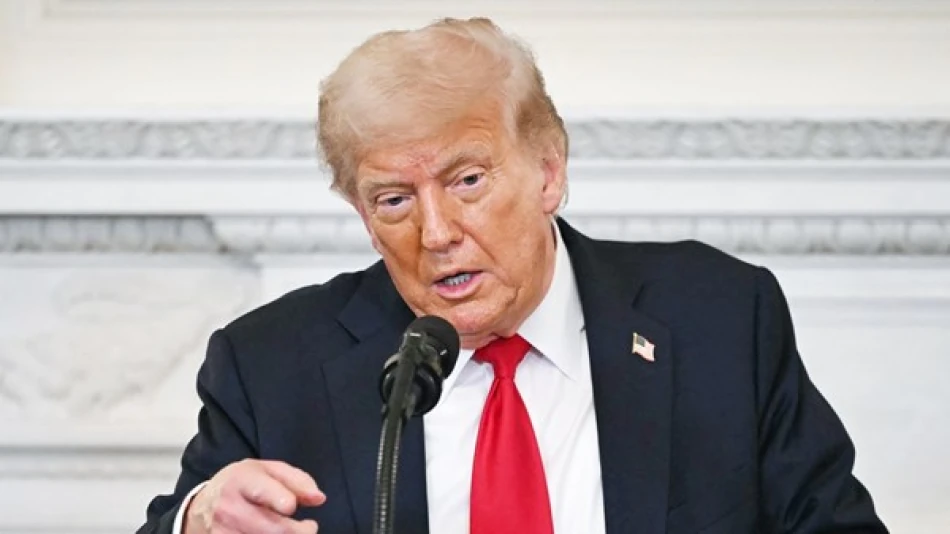
ترامب يجدد دعوته إلى خفض أسعار الفائدة
Trump's Rate Cut Demands Clash with Rising Inflation Reality
President Donald Trump has renewed his pressure campaign against the Federal Reserve, demanding immediate interest rate cuts just as new data shows U.S. inflation accelerating to its fastest pace in five months. The timing highlights a growing disconnect between Trump's economic messaging and underlying price pressures that may actually require tighter monetary policy.
Presidential Pressure Meets Economic Reality
Trump took to Truth Social on Tuesday with a characteristically direct message: "Consumer prices are low. Cut interest rates now!!!" His statement came on the same day the Labor Department released Consumer Price Index data showing prices rising at their steepest rate since January, driven by increases across multiple goods categories.
The president's insistence on rate cuts reflects his long-standing belief that lower borrowing costs will stimulate economic growth and boost asset prices. However, his claim that "consumer prices are low" contradicts the fresh inflation data, suggesting either a misreading of economic conditions or a strategic attempt to influence Fed policy through public pressure.
Tariffs Begin to Show Their Inflationary Impact
The June inflation surge appears linked to Trump's expanded tariff policies, which economists have long warned would eventually translate into higher consumer prices. This development puts the Federal Reserve in a difficult position, as rate cuts during periods of rising inflation typically risk accelerating price growth further.
The inflationary pressure from tariffs creates a policy contradiction: while Trump seeks monetary stimulus through lower rates, his trade policies are generating the exact conditions that typically warrant monetary restraint. This dynamic mirrors similar challenges faced by central banks globally when fiscal and trade policies work at cross-purposes with monetary objectives.
Fed Independence Under Renewed Scrutiny
Trump's public demands for rate cuts echo his previous presidency, when he frequently criticized Fed Chair Jerome Powell for maintaining higher rates. The current pressure campaign tests the central bank's independence at a crucial moment when data-driven policy decisions may conflict with political preferences.
Financial markets are now pricing in a delayed timeline for any potential rate cuts, with analysts suggesting the Fed may postpone action until September at the earliest. This represents a significant shift from earlier expectations of more aggressive monetary easing in 2024.
Market Implications and Investor Positioning
The tension between presidential pressure and economic fundamentals creates uncertainty for investors across asset classes. Bond markets have already begun pricing in higher inflation expectations, while equity markets face the competing forces of potential monetary stimulus against rising input costs from tariffs.
Currency markets are particularly sensitive to this dynamic, as the dollar's strength depends partly on interest rate differentials with other major economies. If the Fed delays cuts while other central banks ease policy, the dollar could strengthen further, potentially impacting U.S. export competitiveness and adding another layer of complexity to trade policy effectiveness.
The coming months will test whether Trump's political pressure can overcome economic fundamentals in shaping Fed policy, with significant implications for inflation expectations, market stability, and the broader economy's trajectory.
Most Viewed News

 Layla Al Mansoori
Layla Al Mansoori






